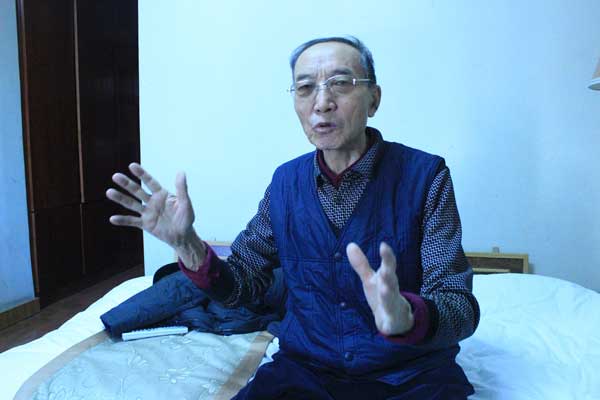Tell a good story
 |
|
Photo by Wang Kaihao / China Daily |
Ulger episodes had no written scripts until the late Qing Dynasty (1644-1911) when they borrowed characteristics from Han novels and thus became easier to be circulated. There are nearly 80 traditional scores accompanying the storytelling. Choor, a two-string musical instrument was long used in ulger, but it was gradually replaced by sihu in the early 20th century to increase the expression patterns.
| Mission possible |
Born in Tongliao's Jarud Banner, a county-level administrative region nicknamed "hometown of ulger", his uncle Pajie (1902-62) was unanimously considered to be the top ulger artist in the 20th century. Rassiodser attributes the reason he fell in love with storytelling to its high popularity in his hometown, but he also says family reputation gives him much impetus.
Rassiodser cites the ulger episode adapted from the famous 12th-century epic circle The Epic of King Gesar, which takes 90 hours to finish chanting. He is among the few people who are still able to complete this storytelling marathon, and thus was titled province-level inheritor of intangible cultural heritage in 2010.
"But, it is hard to include a complete chapter in the repertoire of today's TV galas, which last only for a few hours." He opines the lengthy episodes are an obstacle stopping the arts from spreading widely today.
"We thus lose many chances to make it better known to the public. Most supreme recordings of ulger are only kept in archives. That is why we encourage more newly created works with shorter episodes and content closer to today's daily life in the competition."
In Jarud Banner, local people also struggle to better protect their cultural pride.
Wang Cheng, deputy chief of the banner's cultural relic protection office, sighs when recalling the days collecting ulger-relevant antiques.
"People took the items for granted and did not recognize how valuable they were," he says, introducing 150 relevant pieces exhibited in a 100-odd-square-meter mall next to his office, also the banner's ulger museum. "When we found manuscripts and old time's choor and sihu pieces, many had been damaged in water and fallen into disrepair.
"We need a bigger room and better conditions to save more items, but it's hard to apply for a construction permit," Wang smiles with embarrassment, pointing to a half-finished blueprint for a public museum. "Building a museum in our less than wealthy place will easily be misunderstood by the public as squandering money."
Zhao Hongwei, head of the administrative office of the Jarud TV station, is equally concerned.


















